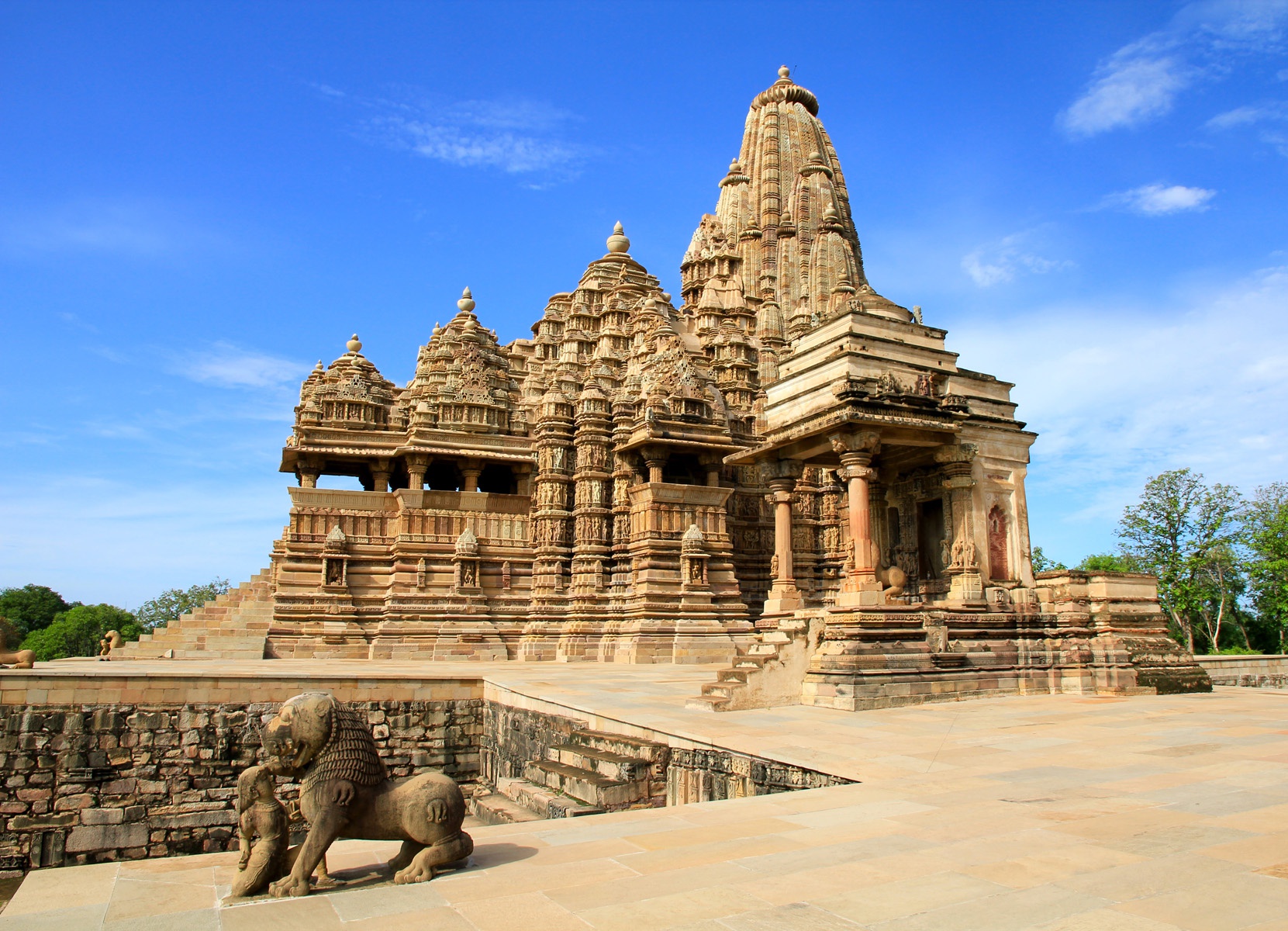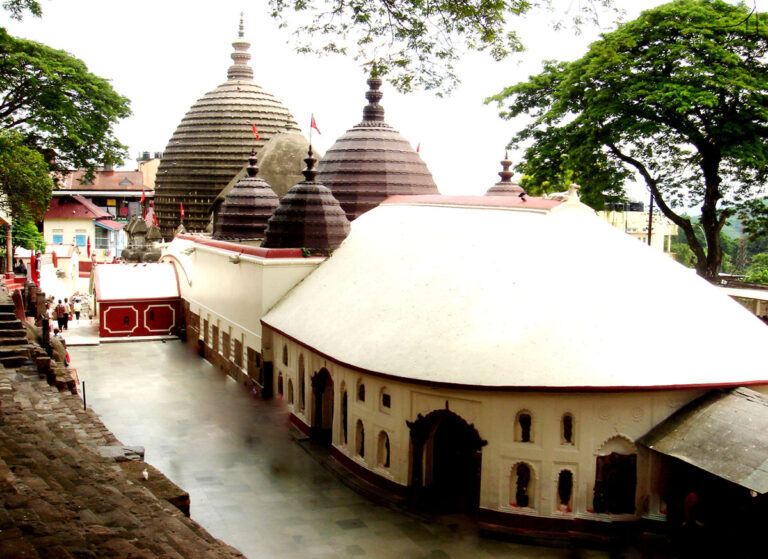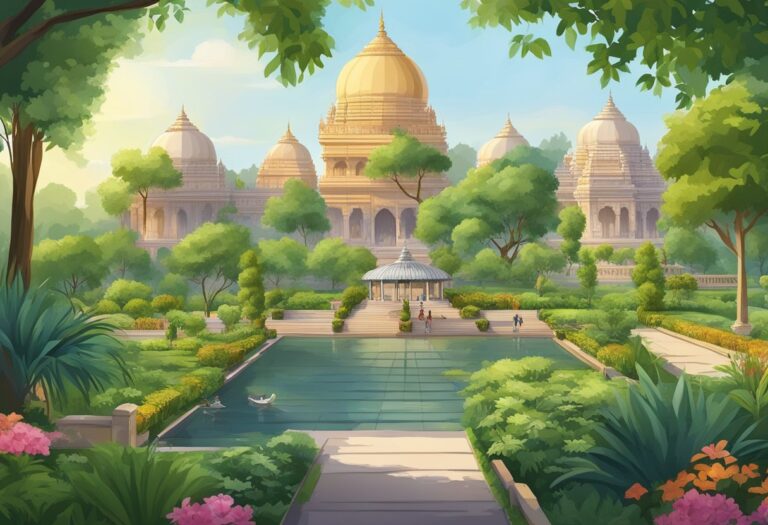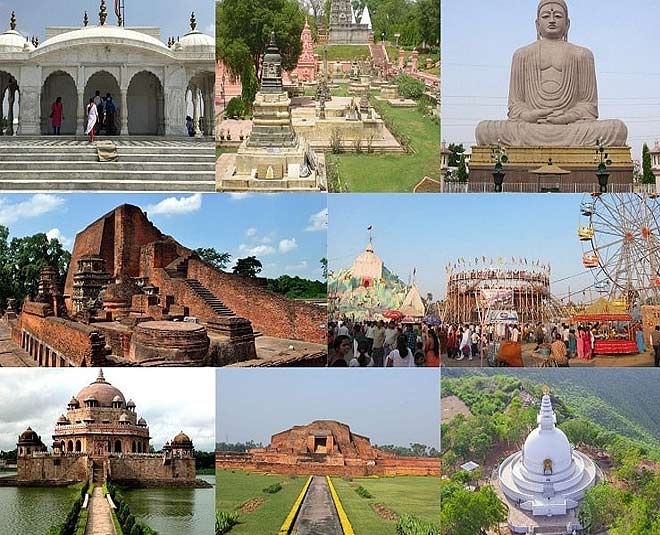History of Chhattisgarh: From Ancient Times to Modern Day
Chhattisgarh is a state located in east-central India. It is bounded by the Indian states of Uttar Pradesh and Jharkhand to the north and northeast, Odisha to the east, Telangana to the south, and Maharashtra and Madhya Pradesh to the west. Its capital is Raipur. The history of Chhattisgarh, which was called as South Kosala goes back to the 4th century AD. In ancient times, this region was known as Dakshina Kosala. This area also finds mention in Ramayana and Mahabharata. Between the sixth and twelfth centuries, Sharabhpurias, Panduavanshi, Somavanshi, Kalachuri and Nagavanshi rulers dominated this region.

The state has a rich cultural heritage and is known for its ancient temples, vibrant folk music, and dance forms. The people of Chhattisgarh are predominantly tribal, and their culture and traditions are an integral part of the state’s identity. The state is also known for its natural beauty, with vast forests, waterfalls, and scenic hills.
Over the years, Chhattisgarh has undergone significant political and economic changes. The state was carved out of Madhya Pradesh in the year 2000 and has since emerged as a major industrial hub. Its economy is primarily driven by agriculture, mining, and manufacturing sectors. The state also has a unique political structure, with a bicameral legislature and a governor appointed by the president of India.
Key Takeaways
- Chhattisgarh has a rich cultural heritage and is known for its ancient temples, vibrant folk music, and dance forms.
- The state was carved out of Madhya Pradesh in the year 2000 and has since emerged as a major industrial hub.
- The state also has a unique political structure, with a bicameral legislature and a governor appointed by the president of India.
Geographical Overview
Area and Location
Chhattisgarh is a state located in central India. It covers an area of 135,194 square kilometers and is bordered by seven other Indian states: Uttar Pradesh and Jharkhand to the north and northeast, Odisha to the east, Telangana to the south, and Maharashtra and Madhya Pradesh to the west. The state’s capital is Raipur.
Major Cities and Districts
Chhattisgarh is divided into 28 districts, with notable cities including Raipur, Bastar, Durg, Korba, Jagdalpur, and Naya Raipur. Each of these cities has its own unique cultural and historical significance.
Natural Resources
Chhattisgarh is endowed with abundant natural resources, including vast coal reserves and significant forest cover. The state is also home to the Mahanadi River, which is an important source of water for the region.
Climate and Time Zone
Chhattisgarh has a humid subtropical climate, with hot summers and mild winters. The state is in the Indian Standard Time zone, which is five and a half hours ahead of Coordinated Universal Time (UTC+5:30).
Elevation and Rank
Chhattisgarh has an average elevation of 294 meters above sea level. In terms of area, it is the 10th largest state in India. As of 2023, its Gross State Domestic Product (GSDP) is estimated to be ₹5.09 lakh crore (US$64 billion), with a per capita GSDP of ₹152,348 (US$1,900).
Historical Background
The rich history of Chhattisgarh dates back to ancient times. The region was known as Dakshina Kosala during the Mahabharata and Ramayana periods. The Sharabhpurias, Somavanshi, Kalachuri, and Nagavanshi dynasties ruled over the region during the medieval period.
Ancient and Medieval History
Chhattisgarh was a part of the South Kosala kingdom during the Ramayana period. Lord Rama’s mother, Kausalya, was the daughter of the king of Kosala. During the Mahabharata period, the region was ruled by the Haihaya dynasty. The Sharabhpurias ruled Chhattisgarh from the 6th to the 8th century AD. The Somavanshi dynasty followed, ruling from the 9th to the 13th century AD. The Kalachuri dynasty ruled from the 14th to the 16th century AD, followed by the Nagavanshi dynasty from the 16th to the 18th century AD.
British Rule and Central Provinces
Chhattisgarh came under British rule in 1845 as the Chhattisgarh Division of the Central Provinces. Raipur gained prominence over the capital Ratanpur with the advent of the British. The Nagpur Assembly was established in 1907, and Chhattisgarh was represented in it.
Maratha Rule and Madhya Pradesh Assembly
Chhattisgarh was under Maratha rule from 1741 to 1845 AD. The Marathas established their capital in Nagpur, and Chhattisgarh was administered as a part of the Nagpur kingdom. After India gained independence, Chhattisgarh became a part of Madhya Pradesh. Chhattisgarh was represented in the Madhya Pradesh Assembly.
Statehood and Post Independence
The demand for a separate state of Chhattisgarh was raised in the 1950s. The movement gained momentum in the 1990s, and Chhattisgarh was finally granted statehood on November 1, 2000. Raipur became the capital of the new state.
In conclusion, the rich history of Chhattisgarh dates back to ancient times. The region was ruled by various dynasties during the medieval period. Chhattisgarh came under British rule in 1845 and was administered as a part of the Central Provinces. After India gained independence, Chhattisgarh became a part of Madhya Pradesh. The demand for a separate state of Chhattisgarh was finally granted in 2000.
Political Structure
Government and Administration
Chhattisgarh is a state in India with a democratic government and a parliamentary system. The state government of Chhattisgarh is headed by the Governor, who is appointed by the President of India. The Governor is the constitutional head of the state and exercises his or her powers in accordance with the Constitution of India.
The Chief Minister is the head of the government of Chhattisgarh and is appointed by the Governor. The Chief Minister is responsible for the day-to-day administration of the state and is assisted by a Council of Ministers. The Council of Ministers is collectively responsible to the Legislative Assembly of Chhattisgarh.
The government of Chhattisgarh is divided into various departments, each headed by a Secretary. The administration of the state is divided into districts, each headed by a District Collector.
Legislative Assembly and High Court
The Legislative Assembly of Chhattisgarh is a unicameral legislature with 91 members, including 90 elected members and one nominated member. The members of the Legislative Assembly are elected for a term of five years.
The High Court of Chhattisgarh is the highest court in the state and is located in Bilaspur. The High Court has jurisdiction over the whole of Chhattisgarh and hears appeals from the lower courts.
Chhattisgarh has representation in both the Lok Sabha and the Rajya Sabha. The Lok Sabha is the lower house of the Parliament of India, while the Rajya Sabha is the upper house. The number of seats allocated to Chhattisgarh in the Lok Sabha and the Rajya Sabha is determined by the population of the state.
Overall, the political structure of Chhattisgarh is designed to ensure democratic governance and the protection of the rights of its citizens.
Demographics
Population and Literacy
Chhattisgarh has a population of approximately 27.9 million people as of 2023. The state has a fairly even distribution of urban and rural populations, with around 23% of the population living in urban areas. The literacy rate in Chhattisgarh has been steadily increasing over the years and was reported to be 77.86% in the 2011 census.
Languages and Religion
The official language of Chhattisgarh is Hindi, which is spoken by the majority of the population. However, Chhattisgarhi, a dialect of Hindi, is also widely spoken in the state. Other languages spoken in Chhattisgarh include Oriya and Marathi.
Hinduism is the predominant religion in Chhattisgarh, with over 90% of the population practicing this religion. Other religions practiced in the state include Islam, Christianity, and Buddhism.
In conclusion, Chhattisgarh has a diverse population with a mix of urban and rural communities. The state’s official language is Hindi, and the majority of the population practices Hinduism. The literacy rate in Chhattisgarh has been steadily increasing, indicating a growing emphasis on education in the state.
Economy
GDP and GSDP
Chhattisgarh’s economy is primarily based on agriculture, mining, energy production, and manufacturing. The state has major deposits of coal, iron ore, dolomite, and other minerals. The central lowland is known especially for its abundant rice production, and the state as a whole provides the bulk of the country’s tendu leaves for bidis.
In terms of Gross Domestic Product (GDP), Chhattisgarh has been performing well. As of 2021, the state’s GDP was estimated to be around Rs. 4.5 lakh crore. The Gross State Domestic Product (GSDP) of Chhattisgarh has also been growing at a steady pace. In 2020-21, the GSDP of the state was estimated to be around Rs. 4.50 lakh crore, with a growth rate of 3.2%.
Infrastructure and Development
Chhattisgarh has made significant progress in terms of infrastructure development in recent years. The state has a well-developed road network and is connected to major cities in the country. The state government has also been investing in the development of airports, with the construction of new airports in Bilaspur, Jagdalpur, and Raigarh.
The state has also been focusing on the development of its power sector. Chhattisgarh is a major producer of electricity in the country, with a total installed capacity of over 20,000 MW. The state government has been investing in the development of renewable energy sources, such as solar and wind power.
Vehicle Registration and HDI
Chhattisgarh has seen a significant increase in vehicle registration in recent years. As of 2021, there were over 1.5 crore vehicles registered in the state. This has led to an increase in demand for fuel and has contributed to the growth of the state’s economy.
The state’s Human Development Index (HDI) has also been improving steadily. As of 2021, the HDI of Chhattisgarh was estimated to be 0.635, which is higher than the national average. The state government has been focusing on improving the quality of education and healthcare services in the state, which has contributed to the improvement of the HDI.
In conclusion, Chhattisgarh’s economy has been growing steadily in recent years, with a focus on infrastructure development, renewable energy, and human development. The state has a lot of potential for further growth and development, with its rich mineral resources and fertile land for agriculture.
Culture and Symbols
Chhattisgarh has a rich cultural heritage and is known for its vibrant traditions. The state is home to a diverse population, and its culture reflects the influence of various ethnic groups. The natives of this state are hardworking and creative, exhibiting their energy in mines and factories. They excel in making traditional handicrafts.
The culture of Chhattisgarh can be best expressed as comprising the following:
Folk Dances
Chhattisgarh is known for its colorful folk dances, which are an integral part of its culture. Some of the popular folk dances of Chhattisgarh are:
- Panthi
- Raut Nacha
- Karma
- Saila
- Gaur Maria
- Pandwani
Festivals
The people of Chhattisgarh celebrate a number of festivals throughout the year. Some of the major festivals are:
- Hareli
- Teeja
- Pola
- Diwali
- Dussehra
- Navratri
Cuisine
The cuisine of Chhattisgarh is a blend of different flavors and spices. Some of the popular dishes of Chhattisgarh are:
- Chila
- Bhajia
- Petha
- Bara
- Bafauri
- Muthia
Symbols
The state of Chhattisgarh has several symbols that represent its culture and heritage. Some of the symbols are:
- State Animal: Wild Buffalo
- State Bird: Hill Myna
- State Tree: Sal
- State Flower: Lady Slipper Orchid
These symbols are an important part of the state’s identity and are used in various official documents and ceremonies.
Conclusion
Chhattisgarh has a rich cultural and historical heritage that is evident from its ancient monuments, temples, and festivals. The state has a diverse range of attractions that are sure to captivate anyone interested in culture and art. Some of the key takeaways from the history of Chhattisgarh are:
- The region has a deep mythological heritage that dates back to the Mahabharata and Ramayana periods.
- The Haihaya dynasty governed Chhattisgarh for six centuries during the 14th century.
- The region was invaded by Rajendra Chola I and Kulothunga Chola I of the Chola dynasty in the 11th century.
- Chhattisgarh was under Maratha rule (Bhonsales of Nagpur) from 1741 to 1845 AD and came under British rule from 1845 to 1947 as the Chhattisgarh Division of the Central Provinces.
Chhattisgarh offers visitors a glimpse into its rich history through its ancient temples, festivals, and tribal rites. Visitors can explore century-old temples dedicated to deities/goddesses and learn about the region’s mythology and history. The state’s diverse range of attractions makes it an ideal destination for anyone interested in culture and art.
Frequently Asked Questions
What is the origin of Chhattisgarh state?
Chhattisgarh was recognized as an independent state on 1st November in 2000, after it was carved out of the state of Madhya Pradesh. The region was previously known as Dakshina Kosala and finds mention in ancient Indian texts such as the Ramayana and Mahabharata.
What are some important events in the history of Chhattisgarh?
The region was ruled by various dynasties including Sharabhpurias, Panduavanshi, Somavanshi, Kalachuri, and Nagavanshi rulers between the 6th and 12th centuries. Later, it was ruled by the Marathas and the British. In the 20th century, the region played an important role in the Indian independence movement.
How did the culture of Chhattisgarh develop?
The culture of Chhattisgarh is a mix of tribal and non-tribal cultures. The state is home to various tribal communities, each with their own unique customs and traditions. The non-tribal population has also contributed to the state’s culture with their music, dance, and art.
What are the major languages spoken in Chhattisgarh?
The official language of Chhattisgarh is Hindi. However, various tribal languages are also spoken in the state, including Gondi, Korwa, Halbi, and Bhunjia.
What are some famous tourist attractions in Chhattisgarh?
Chhattisgarh is home to various historical and natural tourist attractions. Some of the popular ones include the ancient temples of Bhoramdeo and Rajim, the Chitrakote waterfall, and the Kanha National Park.
What is the significance of Chhattisgarh’s location within India?
Chhattisgarh is strategically located in central India, making it an important hub for transportation and trade. The state is also rich in mineral and forest resources, contributing significantly to India’s economy.






